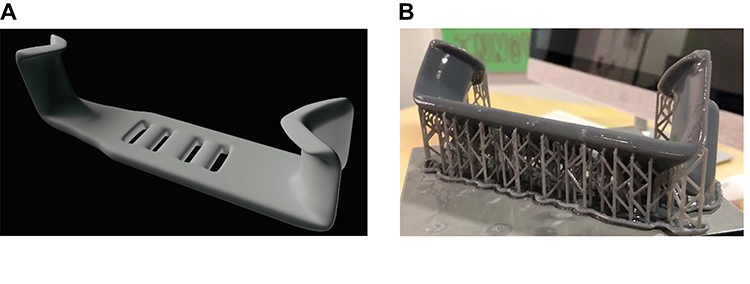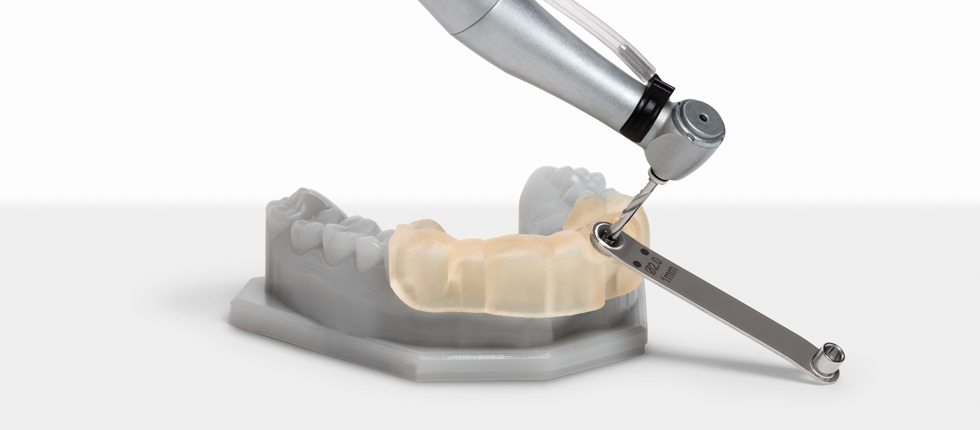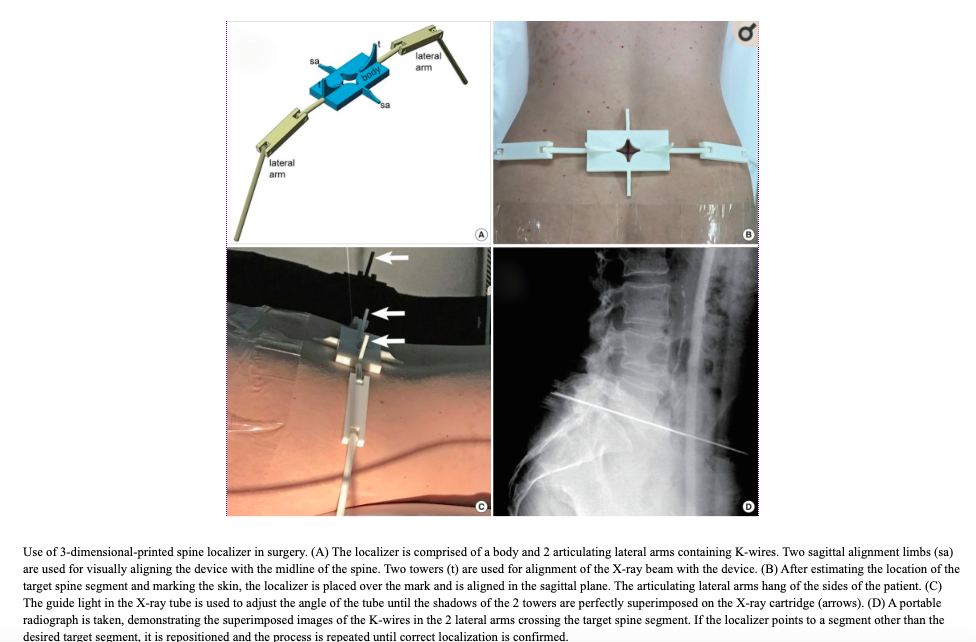The U.S. Department of Defense is using even more of its mind-boggling budget on additive manufacturing (AM) for virtual inventory and on-demand spare parts. This time, the world’s most dangerous war machine has experimented with AM for the fabrication of surgical instruments and medical supplies in logistically challenging environments.
The U.S. Air Force has seen the opportunity for using desktop-sized 3D printers as a means of producing crucial medical supplies, particularly given the fact that there are now sterilizable materials that can be used with these mobile manufacturing systems. To demonstrate the possibilities, the Air Force team designed and printed a novel surgical retractor. We’ve previously published an article looking at autoclaving and sterilizing the same device.
The retractor was designed with downward-angled parallel, curved blades in which one side is smaller, in order to guide the device through narrow incisions, and one side is wider, for incisions in which broader access is necessary. This design earned the device the name “Air Force Retractor,” as the blades resemble the swept wings of fighter aircraft.
To design the file, the Air Force used free online tools, specifically Tinkercad and Blender, to make and change the file to demonstrate the ease with which such instruments could be made with no cost and with free online training. The device was then 3D printed on a Form 2 3D printer, first using Formlabs’ general purpose Standard Grey Resin for prototyping. For the final part, Formlabs’ Dental SG Resin was chosen because the material is a strong, durable Class 1 biocompatible material and can be sterilized in an autoclave or using gamma irradiation.
The Air Force next plans to patent the device, obtain FDA approval, and print the device in stainless steel and a radiolucent polymer – a plastic that cannot be picked up on x-rays.
Citing a study in which a spine localizer was 3D printed and assembled at a medical facility, the research team envisions such medical devices as surgical instruments, prostheses and other tools to be easily manufactured in mobile military units by accessing an online repository or through files stored locally. The authors did cite such issues with the strategy, including: long print time, resolution, computer and internet access for accessing files, size and complexity being potentially limited by a given machine, and the need for hardware and software training for running printers.
The authors of the paper suggest that mobile 3D printing units could be used to “[provide] casualty care in an Anti Access/Area Denial (A2/AD) region” … “in a contested environment against near-peer adversaries.” Once you get through the Orwellian language of it, this evolving field of battle is pretty frightening.
“Near-peer adversaries” is army jargon for nations with military capabilities threatening to the U.S. and its allies—i.e., Russia, China, Iran and North Korea. A2/AD regions are those that are contested by military parties, who may use weapons or armed forces to prevent an opponent from entering those regions. A2/AD weapons are meant to deter a potentially hostile force from entering into specific territory. For instance, China, North Korea, Syria and Iran now host anti-ship missiles as a protective measure against U.S. power projection in nearby waterways.
In the case of Russia, for instance, the U.S. continued to expand NATO forces into Eastern Europe, despite a deal made during 1990 negotiations with the Soviet Union over German unification. As the US-European military apparatus has encroached on Russian boarders, the development of A2/AD defense weapons would seem like a natural response. Regardless of whether or not these systems act as offensive or defensive weapons, the result seems to be continued military buildup by all parties.
While the U.S. Air Force is demonstrating the value of AM in medical emergencies, we can hope that that knowledge can be extrapolated to non-military applications, such as the efforts currently underway in response to often transnational and trans-corporate crises brought about by the COVID-19 pandemic.
Subscribe to Our Email Newsletter
Stay up-to-date on all the latest news from the 3D printing industry and receive information and offers from third party vendors.
You May Also Like
Precision at the Microscale: UK Researchers Advance Medical Devices with BMF’s 3D Printing Tech
University of Nottingham researchers are using Boston Micro Fabrication‘s (BMF) 3D printing technology to develop medical devices that improve compatibility with human tissue. Funded by a UK grant, this project...
3D Printing Webinar and Event Roundup: April 21, 2024
It’s another busy week of webinars and events, starting with Hannover Messe in Germany and continuing with Metalcasting Congress, Chinaplas, TechBlick’s Innovation Festival, and more. Stratasys continues its advanced training...
3D Printing Webinar and Event Roundup: March 17, 2024
It’s another busy week of webinars and events, including SALMED 2024 and AM Forum in Berlin. Stratasys continues its in-person training and is offering two webinars, ASTM is holding a...
3D Printed Micro Antenna is 15% Smaller and 6X Lighter
Horizon Microtechnologies has achieved success in creating a high-frequency D-Band horn antenna through micro 3D printing. However, this achievement did not rely solely on 3D printing; it involved a combination...
































